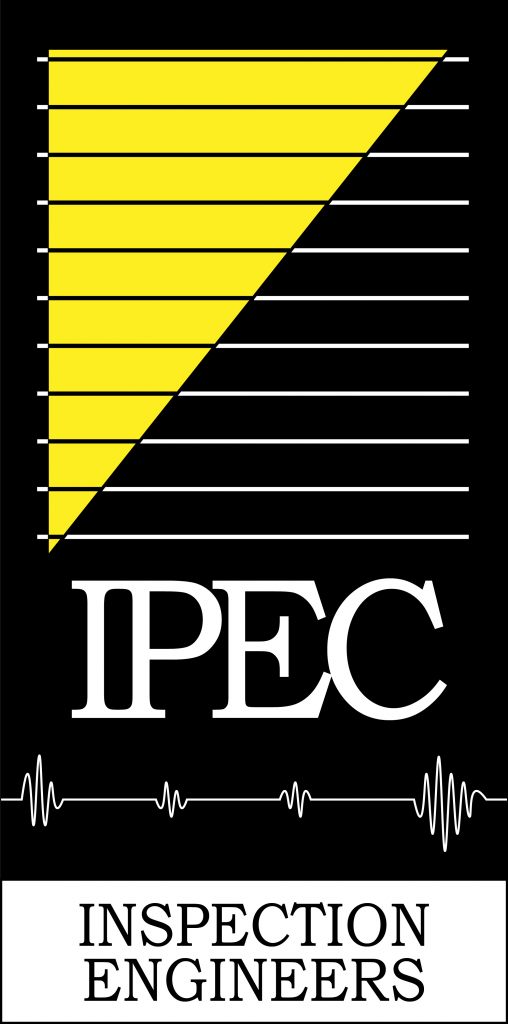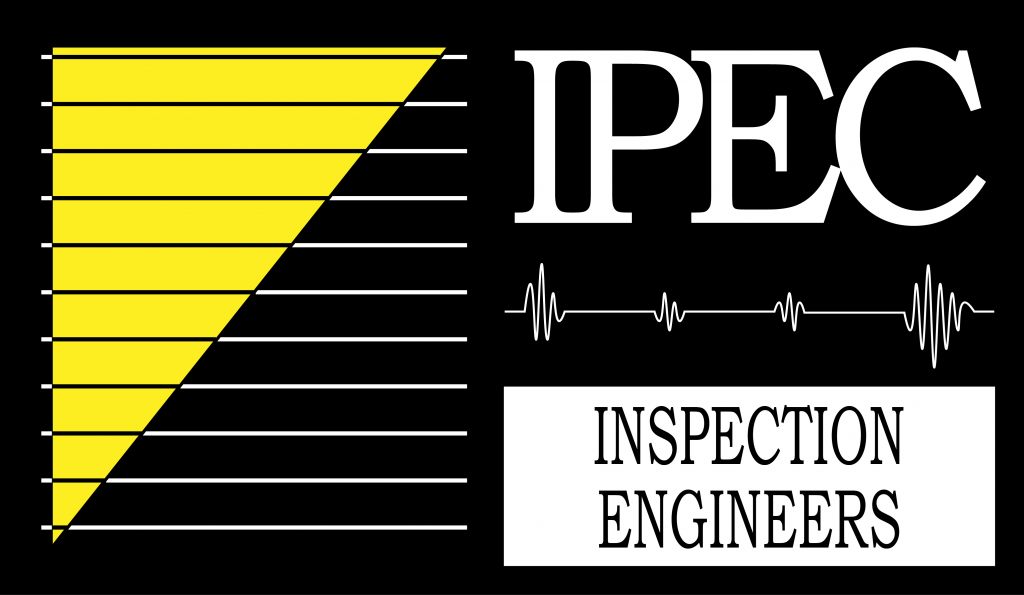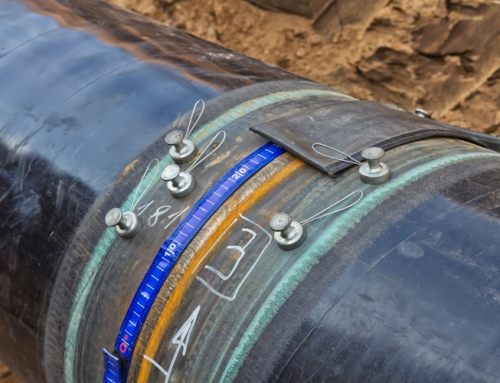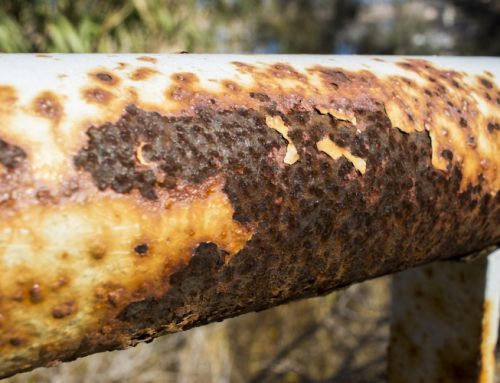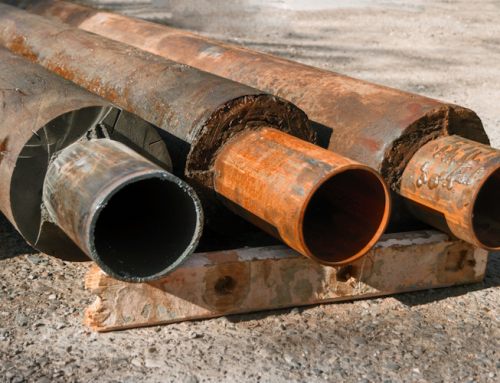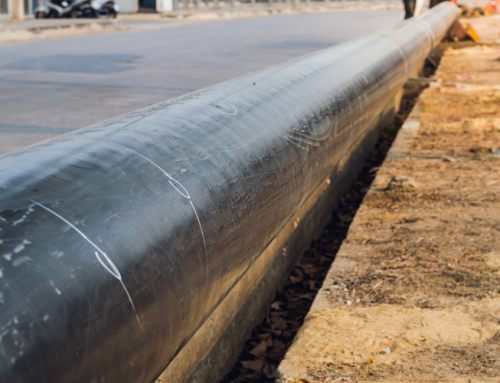Corrosion Under Insulation (CUI) refers to the phenomenon of corrosion occurring on the external surface of a metal substrate that is covered by an insulation material. It is a significant issue in industries where pipes, tanks, and other equipment are insulated to maintain process temperatures or prevent heat loss. CUI can lead to structural damage, leaks, and failures in industrial equipment, which can result in safety hazards, costly repairs, and production interruptions.
CUI typically occurs due to the presence of moisture, contaminants, and oxygen trapped beneath the insulation material. The insulation acts as a barrier, preventing the metal surface from coming into contact with the surrounding environment, which can create a localized environment conducive to corrosion. Factors that contribute to CUI include:
- Moisture: Water can penetrate the insulation through various means, such as leaks, condensation, or environmental exposure. Once moisture becomes trapped, it can create a humid environment that promotes corrosion.
- Insulation material: Some insulation materials can hold moisture against the metal surface, accelerating the corrosion process. Insulation materials that have good water repellent properties can help mitigate this issue.
- Temperature fluctuations: Cyclic temperature changes can cause the insulation to expand and contract, potentially creating gaps or openings where moisture can accumulate and corrode the underlying metal.
- Contaminants: Insulation can trap contaminants from the environment, such as salts, acids, or other corrosive agents, exacerbating the corrosion process.
- Inadequate coating or protection: If the metal surface is not properly coated or protected, it becomes more susceptible to corrosion when exposed to moisture and contaminants.
To mitigate CUI, industries employ various strategies:
- Protective coatings: Applying protective coatings to the metal surface can create a barrier between the metal and the surrounding environment, preventing direct contact and reducing the risk of corrosion.
- Insulation selection: Choosing insulation materials that are less prone to retaining moisture can help reduce the chances of CUI.
- Inspection and maintenance: Regular inspection and maintenance programs can identify early signs of corrosion, allowing for timely intervention and prevention of further damage.
- Corrosion inhibitors: Some industries use corrosion inhibitors that can be incorporated into insulation materials to help mitigate corrosion.
- Proper design: Designing insulation systems with proper weather barriers, drainage systems, and ventilation can help prevent moisture from accumulating.
CUI is a complex issue that requires careful consideration of multiple factors, including the type of insulation, environmental conditions, and the materials being protected. Effective prevention and management of CUI are crucial for ensuring the integrity, safety, and longevity of industrial equipment.
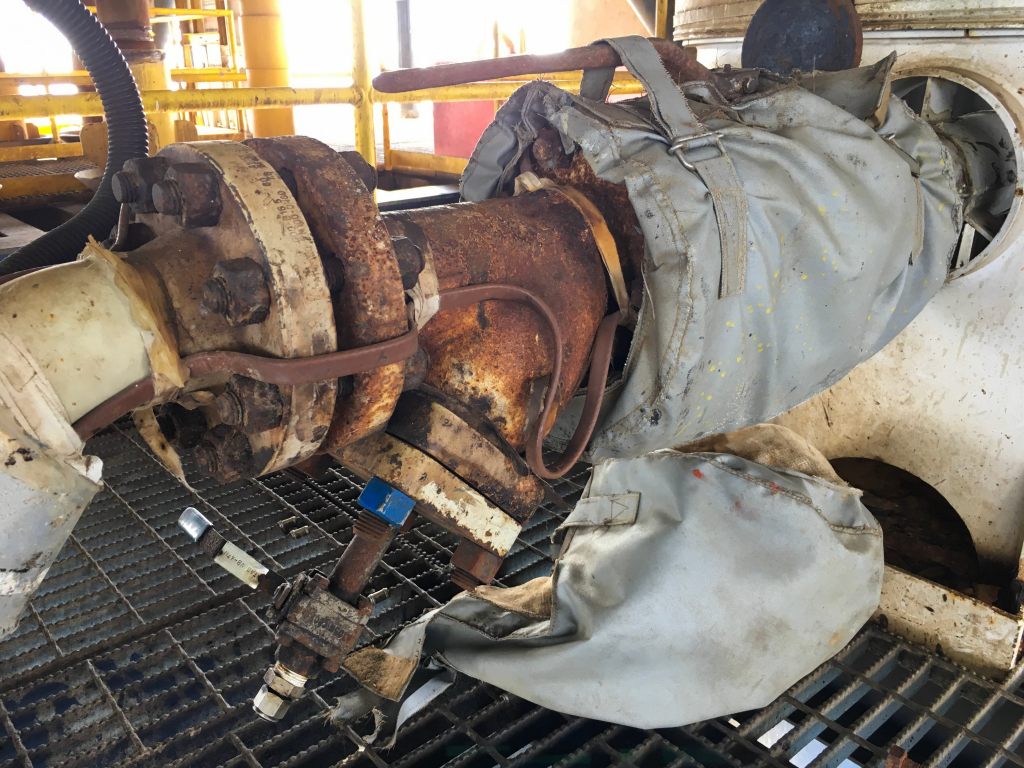
Picture 1 – Typical example of Corroison Under Insulation (CUI)
Corrosion Under Fireproofing (CUF) is a specific subset of the broader corrosion-related issues that can occur in industrial settings. It refers to the phenomenon where corrosion develops on the external surface of metal structures or equipment that are coated with fireproofing materials. Fireproofing is used to provide protection to structures by delaying the spread of flames and heat during a fire, but it can inadvertently create an environment conducive to corrosion under certain circumstances.
Similar to Corrosion Under Insulation (CUI), CUF arises due to the presence of moisture, contaminants, and oxygen trapped beneath the fireproofing material. Here are some key points to understand about CUF:
- Fireproofing Materials: Fireproofing materials, such as cementitious coatings or intumescent coatings, are often applied to metal structures to enhance fire resistance. While they provide crucial protection during fires, they can also create an environment where moisture and corrosive agents become trapped.
- Moisture Ingress: Just like in CUI, moisture can find its way into the gaps and interfaces between the fireproofing material and the underlying metal surface. This moisture, along with contaminants, can lead to localized corrosion.
- Corrosion Mechanisms: The presence of moisture, oxygen, and corrosive agents can trigger various corrosion mechanisms, including general corrosion, pitting corrosion, and crevice corrosion. These processes can compromise the integrity of the metal structure over time.
- Environmental Factors: The severity of CUF depends on environmental conditions, including humidity, temperature fluctuations, and the presence of corrosive substances. Industrial environments, particularly those in coastal or chemical processing areas, are more susceptible to CUF.
- Impact on Structural Integrity: If left unchecked, corrosion resulting from CUF can lead to reduced structural integrity, which is particularly concerning in industries where equipment and structures are subjected to mechanical stress, pressure, or loads.
To address CUF, industries and engineers take several measures:
- Proper Coating Selection: Choosing fireproofing materials that are less likely to trap moisture and are resistant to corrosion can help mitigate the risk of CUF.
- Coating Thickness and Application: Ensuring proper application of fireproofing materials and maintaining uniform thickness can reduce the likelihood of moisture infiltration.
- Inspection and Maintenance: Regular inspections and maintenance programs are essential for detecting early signs of corrosion and taking corrective actions.
- Corrosion Inhibitors: Some corrosion inhibitors can be incorporated into the fireproofing materials to provide protection against corrosion.
- Ventilation and Drainage: Designing fireproofing systems with adequate ventilation and drainage can prevent moisture from accumulating.
Overall, addressing Corrosion Under Fireproofing requires a comprehensive approach that takes into account the specific conditions of the industrial environment, the types of materials used, and the structural requirements. By implementing proper prevention and maintenance strategies, the risks associated with CUF can be minimized, ensuring the longevity and safety of the protected structures.
How do i check for CUI / CUF?
Checking for Corrosion Under Insulation / Fireproofing (CUI / CUF) involves a combination of inspection techniques, material analysis, and preventive measures. Detecting CUI / CUF early is crucial to prevent structural damage and ensure the integrity of industrial equipment. Here’s a step-by-step guide on how to check for CUI & CUF:
- Visual Inspection: Regular visual inspections of insulated equipment and piping can help identify signs of CUI. Look for the following indicators:
- Discoloration or staining on the insulation surface.
- Blisters, bulges, or delamination in the insulation.
- Rust stains or corrosion product residues on the insulation or nearby areas.
- Any visible signs of leaks, moisture, or water ingress.
- Thermal Imaging: Infrared (IR) thermography can help detect temperature anomalies caused by moisture accumulation or corrosion underneath insulation. Cold spots on the insulation may indicate the presence of trapped moisture, which can lead to CUI.
- Ultrasonic Testing: Ultrasonic thickness measurements involve using ultrasonic waves to determine the thickness of the metal substrate beneath the insulation. A decrease in thickness could indicate corrosion.
- Corrosion Coupons: Placing corrosion monitoring coupons beneath the insulation can provide a way to assess the level of corrosion occurring. These coupons are small metal samples that are periodically retrieved and analyzed to determine the extent of corrosion.
- Material Analysis: If there are suspicions of CUI, removing a small section of the insulation for laboratory analysis can provide insights into the corrosion process. Analyzing the insulation, corrosion products, and metal substrate can help confirm the presence of CUI.
- Radiography: In some cases, radiographic techniques can be used to inspect the metal substrate through the insulation. This method requires special equipment and expertise.
- Acoustic Emission Testing: Acoustic emission sensors can detect stress-induced signals from corrosion activity. These signals can indicate the presence of active corrosion beneath the insulation.
- Non-Destructive Testing (NDT): Techniques like pulsed eddy current (PEC) or guided wave ultrasonic testing (GWUT) can be used to assess the condition of metal structures without removing the insulation.
- Insulation Removal: If there are strong suspicions of CUI, partial or complete removal of the insulation may be necessary for a thorough inspection of the metal surface. This should be done carefully to avoid further damage.
- Preventive Measures: To prevent CUI, consider implementing strategies such as using moisture-resistant insulation materials, improving insulation installation practices, and ensuring proper weather barriers, ventilation, and drainage systems.
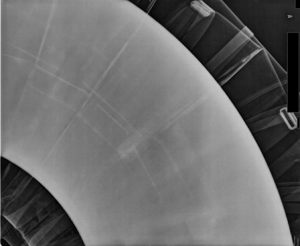
Picture 2 – Typical example of using Radiography to check for Corrosion Under Insulation (CUI)
CUI detection and prevention require expertise and knowledge of the specific industrial environment. It’s recommended to work with professionals experienced in corrosion assessment and inspection techniques to accurately identify and address potential CUI issues. Regular and proactive inspection and maintenance programs are essential to catch and manage CUI before it leads to severe damage.
See also; IPEC & Pulsed Eddy Current (PEC)
Author: James Murphy, Operations Manger of IPEC Inspection Ltd.
